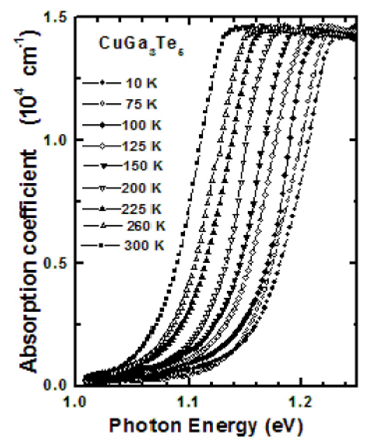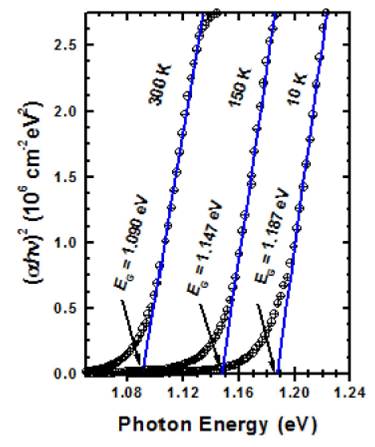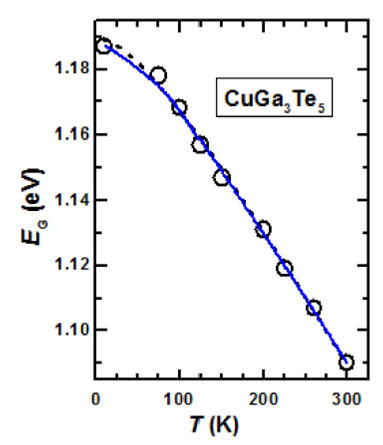1. Introduction
The conversion of heat and solar energy into electrical power could play a significant role in current efforts to develop alternative source energy to reduce the dependence both on fossil fuels and greenhouse gas emissions1.
For this reason, search for new materials for Thermoelectric (TE) device applications is an active area of research2,3. Bulk semiconducting materials such as CuGaTe24-8 ternary chalcopyrite and the ordered defect compounds of the Cu2Te-Ga2Te3 pseudo-binary system9 such as Cu2Ga4Te74,10, Cu3Ga5Te94,11, CuGa3Te54, and CuGa5Te84, have attracted some attention recently as potential candidates for high-temperature TE materials. This is because these compounds have low carrier concentrations12,13, which reduces their thermal conductivity, a condition required to obtain promising materials for TE applications1-3. In spite of this, the optical properties of these Cu-Ga-Te ODC’s have not been studied in detail so far. CuGa3Te5, a member of these ODC’s, has been studied with some interest and some reports on its electrical12,14 and optical14-18 properties have appeared in the literature. However, controversy exists on the nature of its fundamental absorption edge. Although a direct allowed band gap
2. Experimental details
Ingot of CuGa3Te5 was prepared by heating the stoichiometric mixture of at least 5N pure Cu, Ga, and Te sealed in an evacuated quartz ampoule, by using the vertical Bridgman-Stockbarger technique. Details are described elsewhere14. The obtained ingot was polycrystalline and black in color with polished surface. Circular shaped void free samples from the central part where cut for optical absorption study by slicing the ingot perpendicularly to the growth direction. X-Ray diffraction data analysis of these samples indicates that they crystallize in a chalcopyrite-related structure with space group P
3. Results and discussion
3.1 Optical absorption spectra of CuGa3Te5
The absorption coefficient 𝛼 was obtained from the measured transmittance through the relation
In order to establish the nature of the fundamental energy gap in CuGa3Te5, the models for both direct and indirect band gaps should be considered. The theory of interband optical absorption transitions between parabolic bands in semiconductors19 shows that near the fundamental absorption edge,
where
The absorption coefficient spectra (
The value of the energy gap at each temperature was obtained by extrapolating the linear portion of each
Several models have been employed in the literature to describe the temperature variation of the energy gap.
Varshni has proposed the following empirical expression22:
where
On the other hand, Viña et al.23 have proposed a more physically justified expression for the
where
Equations (2) and (3) were fitted to the
4. Conclusion
From the analysis of the optical absorption spectra of CuGa3Te5 as a function of temperature, it is reconfirmed that this compound has a direct-allowed band gap between parabolic bands which varies from 1.187 to 1.090 eV in the temperature range from 10 to 300 K, respectively. The mean temperature of the phonon involved in the direct band-to-band transition is 3/4





![Family of Lamé spheroconal quadrupole harmonic current distributions on spherical surfaces of magnetic induction fields with constant gradients inside and vanishing asymptotically outside [Rev. Mex. Fis. 62 (2016) 362-368]](/img/en/next.gif)





 text new page (beta)
text new page (beta)





